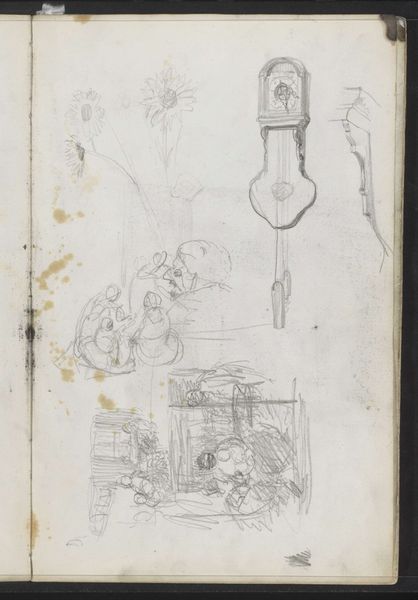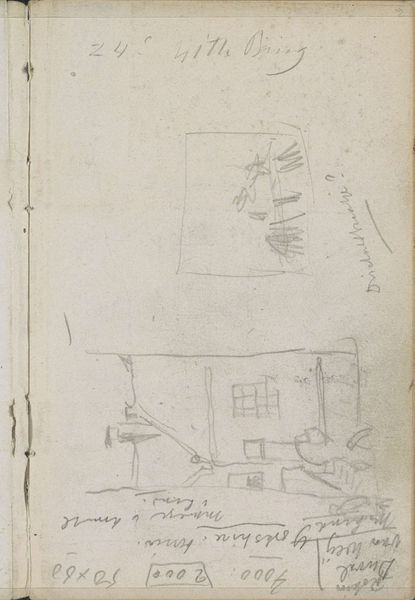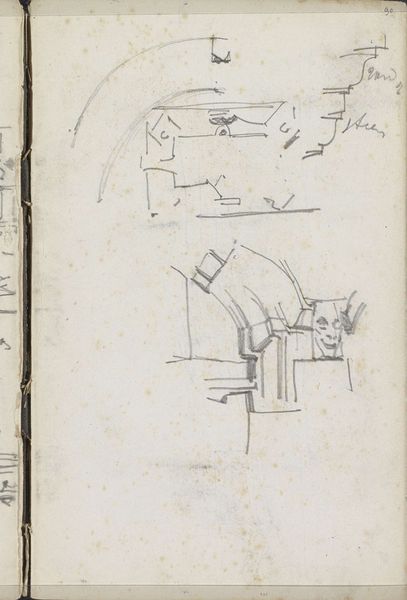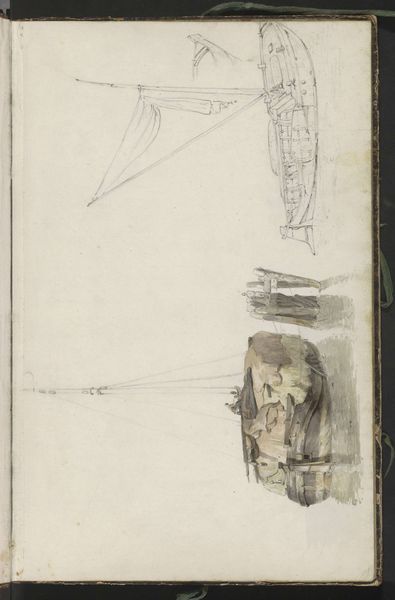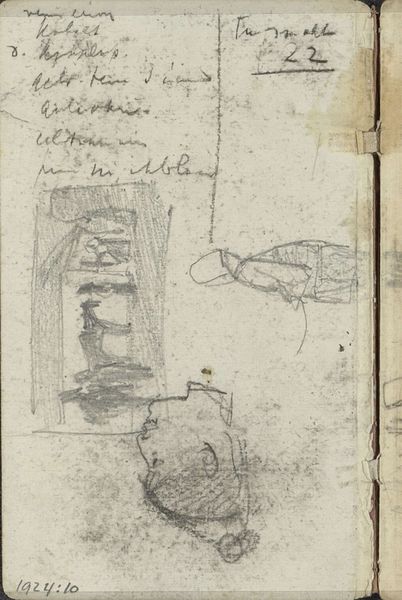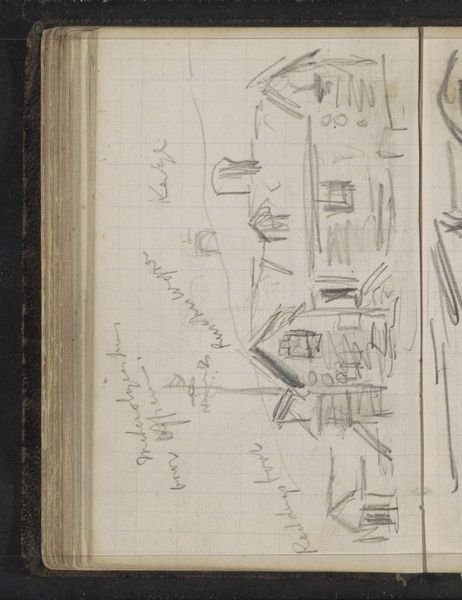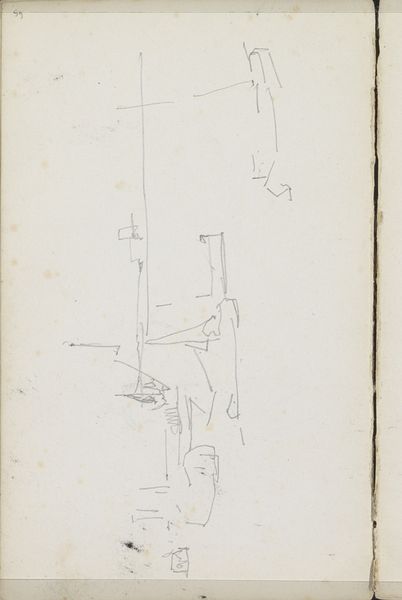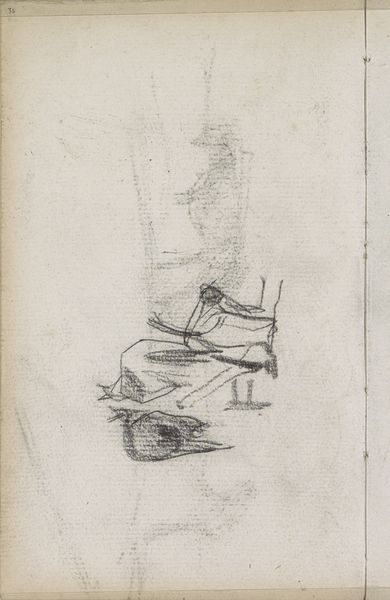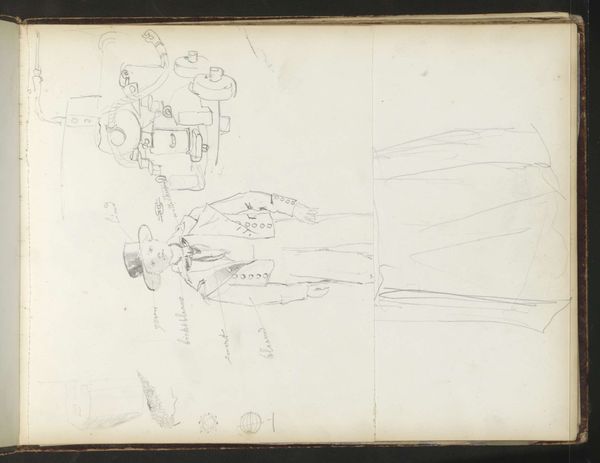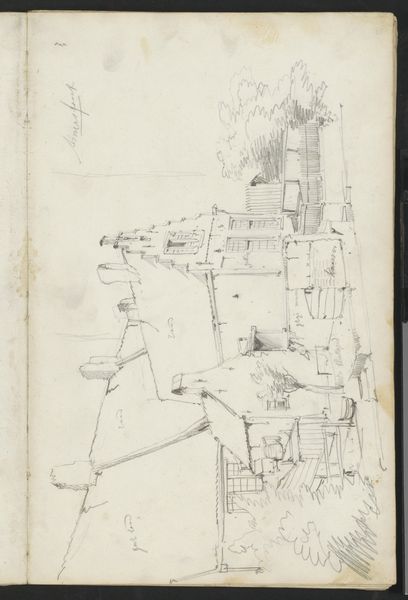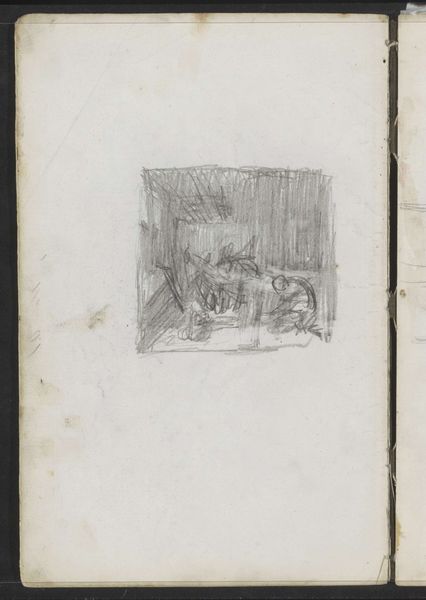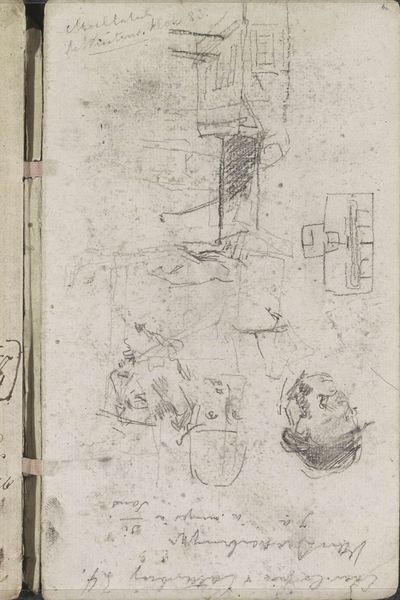
drawing, pencil
#
drawing
#
toned paper
#
quirky sketch
#
sketch book
#
personal sketchbook
#
sketchwork
#
ink drawing experimentation
#
pen-ink sketch
#
pencil
#
sketchbook drawing
#
genre-painting
#
storyboard and sketchbook work
#
sketchbook art
#
realism
Copyright: Rijks Museum: Open Domain
Curator: Welcome. Before us is "Bordenrek en een tafel met eten en drinken," or "Plate Rack and a Table with Food and Drink," a drawing by Jozef Israëls dating from about 1855 to 1859. Editor: Immediately, I'm drawn to the sketch-like quality; the use of pencil and ink creates a sense of immediacy, as though we're peeking into the artist's notebook. Curator: Precisely. Note the strategic deployment of line and tone. The varying weights of the pencil strokes define objects in space. Look closely at the table's edge or the shadow beneath the plate rack—the artist expertly uses hatching to describe form and volume. Editor: Yes, but beyond the formal elements, it feels… unfinished, provisional. One wonders about Israëls' process. Was this preparatory work for a larger composition, or simply a record of everyday life? I'm curious about the paper itself; its texture suggests a kind of coarse, handmade quality that must have affected the pencil’s behavior on the surface. Curator: A valid point. However, that very roughness underscores the realism, placing emphasis on form over idealization, as reflected through the domestic setting. Notice how objects aren’t centered but deliberately asymmetrical to reflect their natural placement. Editor: That speaks to its function, too. If it was captured *in situ,* this could be the artist documenting readily available materials, referencing everyday Dutch life. The table setting represents domestic rituals bound with resources. Curator: Indeed. The act of observing a simple domestic space turns it into an opportunity to capture intrinsic aesthetic value. Through the organization of shapes and tones, a commonplace subject is raised to the level of art. Editor: Perhaps, but one cannot separate the art from its conditions of creation. The availability and type of paper, the price of ink… even the very light under which Israëls worked. These all materially impacted the image before us, intertwining the formal composition with socio-economic forces. Curator: I acknowledge your points on material constraints, however one may still derive pleasure from how tonal balance, arrangement, and formal organization give voice to common themes with extraordinary execution. Editor: And the intersection between the two defines what it has to say to us now. Thanks for shedding light. Curator: Thank you.
Comments
No comments
Be the first to comment and join the conversation on the ultimate creative platform.
